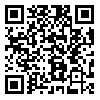BibTeX | RIS | EndNote | Medlars | ProCite | Reference Manager | RefWorks
Send citation to:
URL: http://payavard.tums.ac.ir/article-1-6103-en.html
2- Master of Science in Medical Library and Information Sciences, 17 Shahrivar Educational, Research and Remedial Center, Guilan University of Medical Sciences, Rasht, Iran ,
Background and Aim: As a new educational innovation, "MOOC" refers to Massive Open Online Course which provide the chance of training for the public. Regarding the importance of MOOC production for improving health literacy knowledge in the medical field, the purpose of the present study was to comparatively investigate the MOOC presented on the Maktab Khaneh website based on quadruple indexes focusing on the field of medicine, determining and explaining it.
Materials and Methods: This study was descriptive and an applied research, which has been conducted in January 2016. Statistical population was all of the educational course presented by the Maktab Khaneh website. Data were collected using direct observation of the Maktab Khaneh website and courses was studied according to quadruple indexes of MOOC, universities cooperation and the education field. The collected data was analyzed after being entered into the statistical software Excel using descriptive statistics.
Results: Based on obtaining data, courses presented by the Maktab Khaneh website were Massive, Open, Online, But some of them were the Courses. Major cooperation was from Sharif University of Technology, Khan Academy, and then Tehran University. Whereas, cooperation of other universities was low.
Conclusion: Despite the necessity of MOOC production in the medical field, MOOC production rate in the medical filed was very low. Faculty members of different universities and institutes are suggested to exploit this new educational innovation and take effective actions for introducing MOOC.
ePublished: 1399/07/23
| Rights and permissions | |
 |
This work is licensed under a Creative Commons Attribution-NonCommercial 4.0 International License. |





